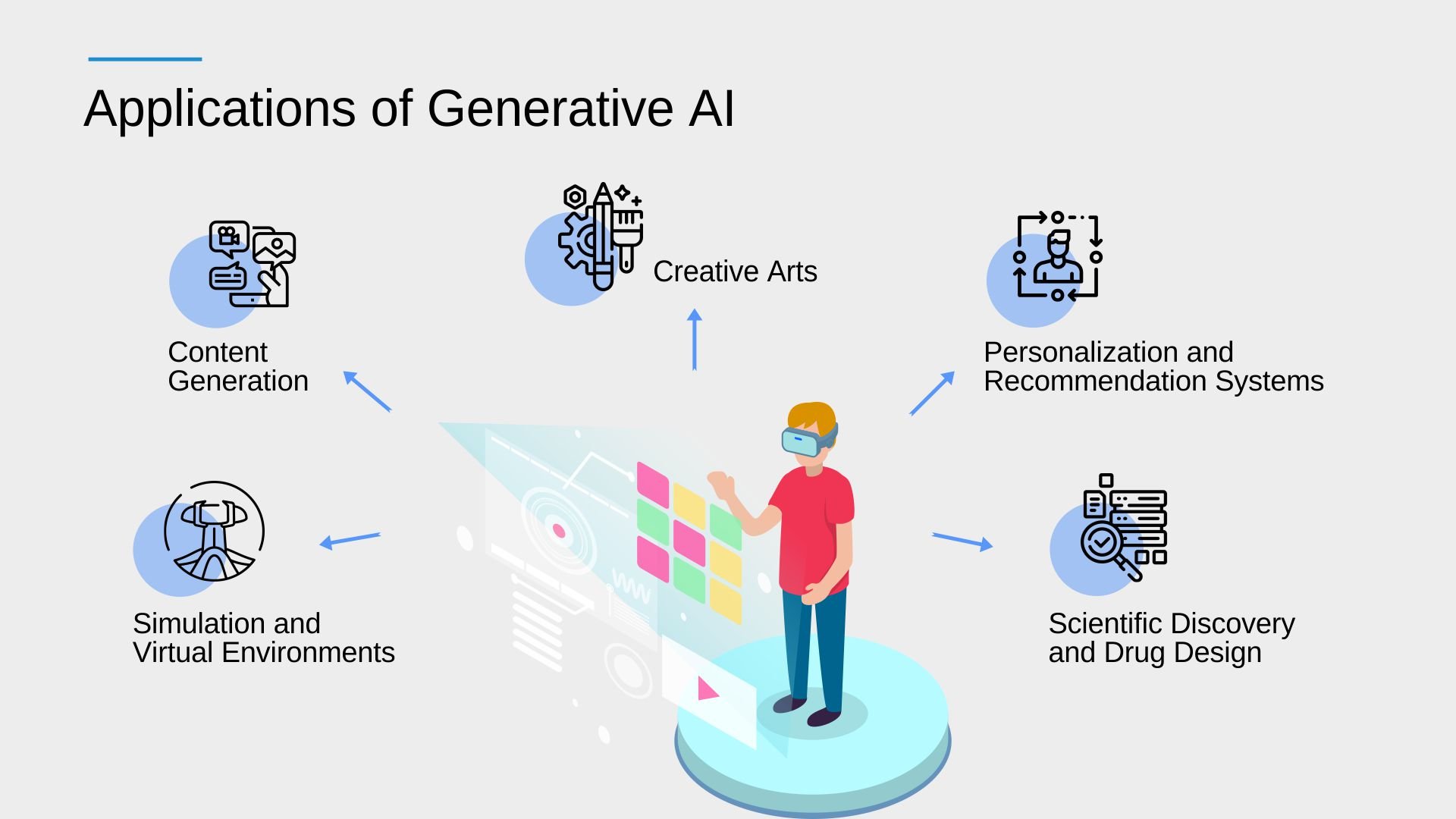Generative Artificial Intelligence (AI) has emerged as a transformative field that pushes the boundaries of human creativity. It encompasses a range of techniques and models that enable machines to autonomously generate original and innovative content, such as images, music, text, and even entire virtual worlds. In this blog, we will explore the meaning and potential of generative AI, shedding light on how it revolutionizes creative endeavors and opens up new possibilities for human expression.
What is Generative AI?
At its core, generative AI refers to the use of artificial intelligence techniques to create content that has not been explicitly programmed or directly sourced from existing data. Unlike traditional AI models that rely on pre-defined rules or data-driven patterns, generative AI models are designed to learn from data and generate novel outputs that capture the underlying complexity and diversity of the input.
There are three main categories into which generative AI techniques can be broadly divided.:
- Generative Models: These models are trained to learn the underlying patterns and distributions within a given dataset, enabling them to generate new content. Examples include Generative Adversarial Networks (GANs), Variational Autoencoders (VAEs), and Autoregressive Models.
- Reinforcement Learning: In reinforcement learning, agents learn to interact with an environment, generating content through a trial-and-error process. By maximizing rewards and minimizing penalties, these agents can generate creative outputs based on the goals and constraints defined in the learning environment.
- Evolutionary Algorithms: Inspired by Darwinian principles, evolutionary algorithms simulate the process of natural selection to generate new solutions iteratively. By iteratively evolving a population of candidate solutions, these algorithms can optimize creative outputs based on predefined objectives and constraints.
Applications and Impact

Generative AI has made a significant impact across various domains, revolutionizing industries and unleashing new possibilities for human creativity:
- Creative Arts: Generative AI has empowered artists, designers, and musicians to explore new frontiers in creative expression. Artists can leverage generative models to create unique artworks, composers can experiment with AI-generated music, and designers can discover novel patterns and styles. This technology acts as a collaborator and source of inspiration, augmenting human creativity and expanding artistic horizons.
- Content Generation: Generative AI has transformed content creation by enabling machines to generate text, images, and videos. Chatbots can generate natural language responses, image synthesis models can create realistic visuals, and video editing algorithms can generate dynamic and engaging content. This technology enhances productivity, streamlines creative workflows, and opens up opportunities for personalized and tailored content experiences.
- Simulation and Virtual Environments: Generative AI plays a pivotal role in simulating realistic environments and generating virtual worlds. Architectural designs, urban planning layouts, and video game environments can be dynamically generated, optimized, and rendered based on desired criteria. This fosters innovation, facilitates rapid prototyping, and allows for immersive user experiences in virtual reality.
- Personalization and Recommendation Systems: Generative AI enables highly personalized experiences by generating recommendations, tailored products, and customized services. By analyzing user preferences, behavior patterns, and historical data, generative models can generate personalized content suggestions, product recommendations, and user interfaces. This enhances user engagement, satisfaction, and ultimately leads to a more fulfilling user experience.
- Scientific Discovery and Drug Design: Generative AI has accelerated scientific research and drug discovery processes. It aids in generating new hypotheses, designing novel molecules, and optimizing chemical compounds. By simulating and exploring vast chemical space, generative models can assist researchers in identifying potential candidates for drug development, optimizing material properties, and advancing scientific understanding.
Challenges and Considerations
Although generative AI has vast possibilities, it also brings forth obstacles and factors that necessitate attention:
- Ethical Concerns: The ethical implications of generative AI are significant. From issues related to ownership and copyright of AI-generated content to the potential misuse of deep fakes, careful consideration and responsible practices are essential to ensure the technology's positive impact on society.
- Bias and Fairness: Generative artificial intelligence (AI) models have the potential to produce biased content as a result of inheriting biases from the data they were trained on. Addressing bias and ensuring fairness in the generation process is crucial to avoid perpetuating existing social, cultural, or gender biases.
- Validation and Trust: Assessing the quality and authenticity of generative AI outputs can be challenging. Establishing robust validation methods and transparency in the generative process is crucial to building trust among users and stakeholders.
- Data Privacy and Security: Generative AI often requires large datasets to train models effectively. Protecting data privacy and ensuring secure handling of sensitive information during the training and generation processes are essential considerations.
Conclusion
Generative AI is revolutionizing the way we approach creativity, providing machines with the ability to generate original and innovative content. Through various techniques and models, generative AI empowers artists, designers, and researchers to explore uncharted territories and unlock new possibilities for human expression. However, it is crucial to approach generative AI with an ethical mindset, addressing challenges related to bias, fairness, privacy, and validation. By leveraging the potential of generative AI responsibly, we can harness its power to shape a future where creativity knows no bounds.
